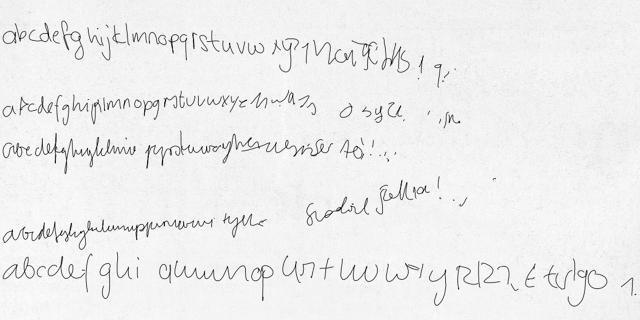In the digital age, proficiency with a keyboard is considered more important to a student's education than legible handwriting, leading some to despair that the art of writing by hand is going extinct. How ironic, then, that just as humans are throwing away their fountain pens, machines are picking them up?
A new project by Alex Graves at the University of Toronto has successfully taught a neural network how to write by hand. Well, not by hand, I guess—neural networks don't have appendages. (Yet.) And the "ink" is still just a generated image. But the text outputted by Graves's neural network looks like it was written by hand, and that's the point.

If you the official project page, you can test out Graves's Neural Network Handwriting Generator for yourself. Just type in some text, select a style, adjust the bias (essentially making the sample more or less legible), and so on. It's pretty neat, considering the fact that this isn't just a computer outputting text in a pre-rendered cursive font. It's actually developing its own handwriting style on the fly from scratch.

How does it do that? Just like Google's Deep Dream AI, which sees the whole world in terms of hallucinogenic dog faces. They're both neural networks, which means they simulate the way the human brain works by "firing" up a computer core in the same way the brain fires up a cluster of neurons. By training a neural network on a robust dataset, then initiating a predictive feedback loop, you can program it to 'generate'seemingly original art.

Graves's neural network has been trained on the IAM Online Handwriting Database. This allows it to 'predict' how any given character is usually drawn by hand, point by point: tell it you want an 'r' and it'll abstract all the r's it knows into a single glyph. Feed that glyph back into the neural network enough times, and pretty soon, the machine has generated its own idiosyncratic handwriting style.

It's pretty cool stuff that makes me wonder when we'll start seeing our first neural network designed fonts. (Perhaps they could even be iterated in real-time, right on your own computer.) In the meantime, Graves's neural network ought to be interesting to computer science lovers, and of particular interest to would-be kidnappers drafting a ransom note.